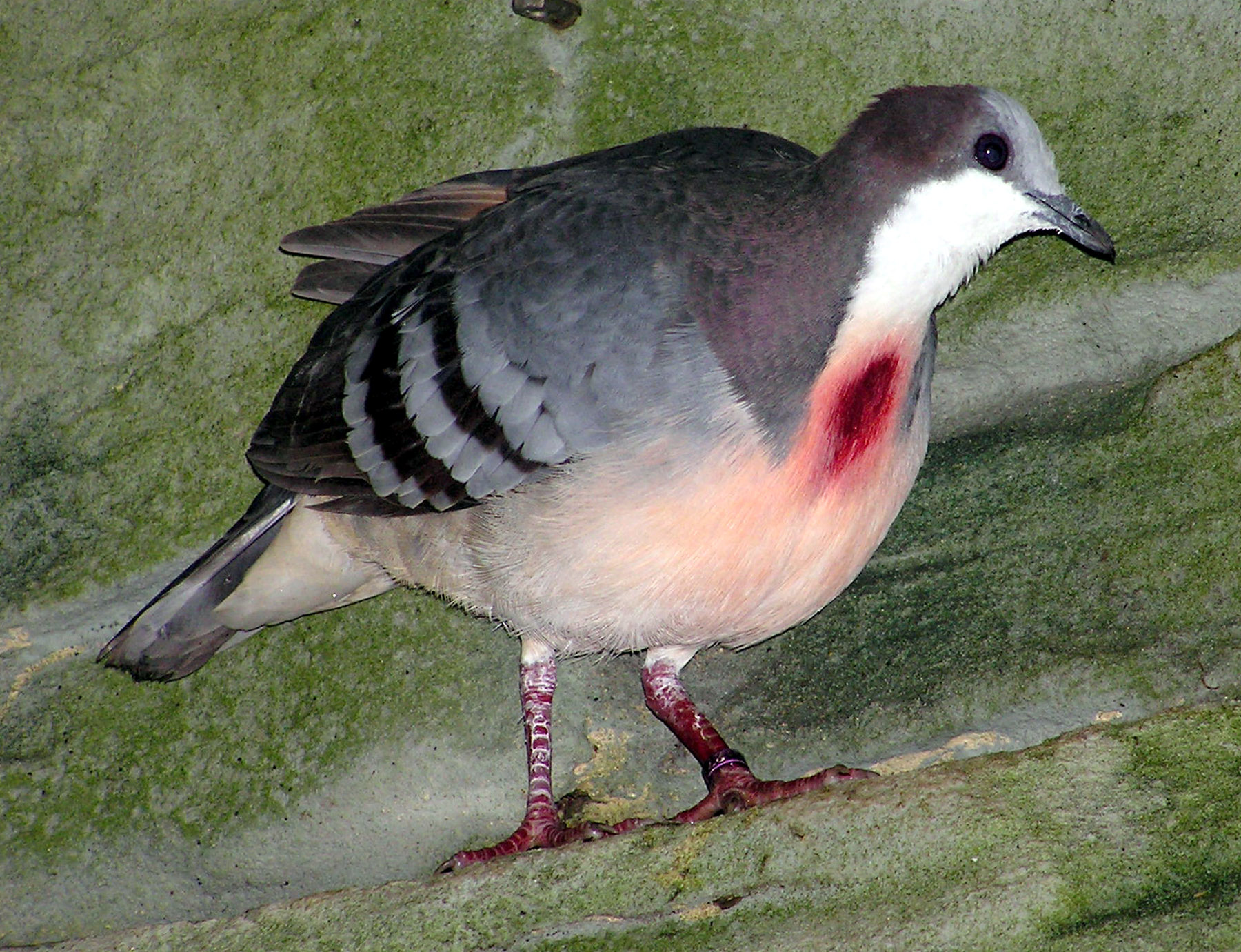- Luzon Bleeding-heart
Taxobox
name = Luzon Bleeding-Heart Pigeon

image_width = 200px
status = NT | status_system = IUCN3.1
regnum =Animal ia
phylum = Chordata
classis = Aves
ordo =Columbiformes
familia =Columbidae
genus = "Gallicolumba "
species = "G. luzonica"
binomial = "Gallicolumba luzonica"
binomial_authority = (Scopoli, 1786)The Luzon Bleeding-heart ("Gallicolumba luzonica") is one of a number of species of ground
dove in thegenus "Gallicolumba " that are called "bleeding-hearts". They get this name from a splash of vivid red colour at the centre of their white breasts. The Luzon Bleeding-heart is the species in which this feature is most pronounced, and on first sight it is hard to believe that the bird has not recently been wounded. This is also partially due to a reddish hue extending down the belly, providing the illusion of blood having run down the bird's front.On its upper surfaces, the Luzon Bleeding-heart is slate grey in colour, but because it is iridescent, it can appear to be purple, royal blue, or bottle-green, and the apparent colour varies with lighting conditions. The belly and under wing areas are buff or chestnut. As in most pigeons, there is little
sexual dimorphism ; males tend to be larger and have a more pronounced red patch, and some authorities claim that the female has a purplish iris, though others dispute this. Body shape is typical of the genus, with a round body, a short tail and long legs.The species is endemic to the central and southern parts of the large island of
Luzon , and the neighbouring smallPolillo Islands , in thePhilippines . It lives in primary or secondary forest, and can be found at altitudes varying from sea level up to 1400 metres. They eat seeds, berries andgrub s. They are shy and secretive, and very quiet, and rarely leave the ground except when nesting. Unlike the other bleeding-hearts, they usually lay two eggs in each clutch.Although not formally regarded as endangered, the Luzon Bleeding-heart is under some threat, since it is commonly trapped. Local people use it for
meat , but its striking appearance means that there is also a market for it in thepet trade. A captive breeding project has been started in Australia.The Luzon Bleeding-heart was featured on a Philippine 2-peso
postage stamp in 1994.References
* Database entry includes a brief justification of why this species is near threatened
External links
* [http://www.zebrafinch.com/DiamondDove/BleedingHeart.html Detailed account by a fancier who has kept the species in captivity]
Wikimedia Foundation. 2010.
